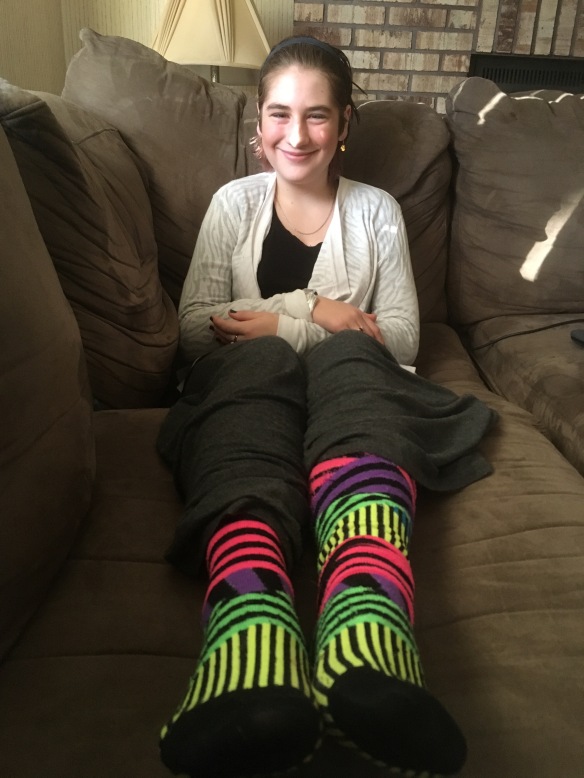Do you have a child who has sensory issues or who for other reasons does not always respond positively to hugs or other normal signs of parental affection? This is very common in foster and adoptive families as well. At the “Refresh” conference in Chicago this weekend, I shared one idea that has worked well for us — we call it “Filling up the Love Banks.” It allows the child to communicate the kind of touch (and the duration) he or she needs to the parent in a way that respects boundaries and makes the child feel safe and loved.
When I sense that Sarah (or Chris) is in need of a hug, I ask her, “Do you need your love banks filled?” This will generally produce an immediate, positive response. She strips off her socks and shoes and sits on the couch with me, her feet close to my lap. Gently I stroke or put gentle pressure on the instep, musing aloud, “Hmm… let’s check your hug bank first. Is your hug bank full?” If she wants a hug, she says, “No, I think it’s empty.” Then she cuddles up to me and we hug for ten seconds or so. Then I touch the same spot on the foot again. “Is the hug bank full yet? No? Let’s try again.” We hug again, a little longer this time. Then back to the foot rub… until she says the bank is full.
Next, it’s the “kiss bank,” on the other side of the foot. We give butterfly kisses and raspberries, “Mommy kisses” (on the forehead) and fairy kisses (blowing the bangs from the forehead). Buffalo kisses, in which I swish a lock of my hair across her cheek, seem to be a favorite, with “baby buffalo,” “mommy buffalo” and “daddy buffalo” (bigger bunches of hair) each taking a turn. Each time, we check the foot to see if the “Kiss Bank” is full.
The ball of the foot is where the “tickle bank” resides. We like “rub tickles” at our house, gentle pressure on the arms and calves. If your child has a history of abuse, you may want to skip this one at first if you think it will create a trigger. Or you might let your child tickle YOU. Always check every couple of seconds to see if the “tickle bank” is full.
Finally, the “face trace bank.” The child closes her eyes as with one finger the parent traces the eyebrows, eye lashes, nose, lips, and ears. Finish by swooping the whole face in an oval, just beneath the hairline to under the chin.
Feel free to improvise as you discover the kind of affection, respectful touch your child responds to the best. At first you might start with a simple foot massage or scalp massage. Put on some relaxing music. Choose a time of day when you are most wanting the child to relax and “wind down.” This can be a great way for parent and child to bond in a loving, appropriate way that teaches the child to establish and practice healthy boundaries while still getting the love he or she needs to feel happy and connected.
